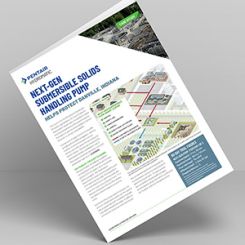The end user’s need seemed straightforward at first glance. A power plant wanted to replace its aging deionization infrastructure with a more modern system using ultrafiltration (UF), reverse osmosis (RO) and electro-deionization (EDI). The power industry is one of the largest industrial water users by volume in the world, with needs ranging from water cooling to production of ultrapure water for steam to feed turbines. Requests to replace aging water treatment assets are not uncommon. The complicating factor in this example was the time frame. This power plant was a traditional coal fired plant, and it ran continuously. It had one scheduled shutdown per year, and it needed a new water purification plant to be installed in its narrow window of time. It also had several plant specifications, such as materials of construction and instrumentation, that were important. The combination of meeting the user’s unique specifications by customizing equipment and executing quickly on a project are two goals historically at odds. Customization requires extra engineering, and procurement of unique components can drive equipment lead times to be longer than with standard, off-the-shelf equipment. In years past, this combination of customization and speed would have forced the power plant to choose one over the other, either missing its time window and postponing the project, or accepting equipment that did not meet all of the specifications the end users cared about. Fortunately, digitization of many water purification design and construction tools has allowed companies to be flexible in the equipment options users care about and still execute on projects with speed. Digitization of tools comes in several forms. Today’s process design tools are available online and allow for accurate water quality projections in minutes instead of days. Cost estimating and proposal writing can now also be completed online, significantly reducing the time required for engineers to prepare proposals and schedules to match users’ unique specifications. Planning for spare parts and regular consumable replacements can also be executed quickly using an online store for pricing and delivery information.
 Image 1. Sample process flow design from the process design tool. (Images courtesy of SUEZ)
Image 1. Sample process flow design from the process design tool. (Images courtesy of SUEZ)Digitization of Process Design Tools
The first step in designing a water purification system is process design. The feedwater needs to be evaluated, and proper treatment steps must be chosen to purify the feedwater to the level required by a user’s unique process. Today, these water quality projections can be done with tools available online. Some design tools allow engineers and users to run various treatment scenarios based on the feedwater and predict closely what the treated product water will look like. Images 1 and 2 show sample screens from a process design tool. These tools can model RO and EDI process designs and give accurate views of what to expect from a finished purification system. Image 2. Sample feedwater analysis to customize the solution design.
Image 2. Sample feedwater analysis to customize the solution design.Digitization of Equipment Design, Pricing & Delivery
The next step in designing a water purification system is to choose the unit processes required and the options needed to meet a plant’s unique specifications. Users often have strong opinions on materials of construction, instruments, membrane types and level of automation. Historically, this customization would require engineering work, both to price the system and to estimate lead time, as well as to create drawings and bills of material to get the system built. Today, through digitization, many of these engineering processes in advance and put into online tools. One of these planning tools allows an engineer or user to choose RO equipment that meets capacity and then customize it to meet specifications. Image 3 shows a screenshot of the design parameters used to design the RO system. Image 3. Screenshot of the values used to configure the appropriate product to meet specifications.
Image 3. Screenshot of the values used to configure the appropriate product to meet specifications.
